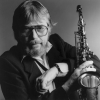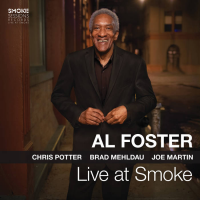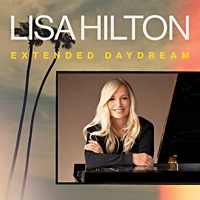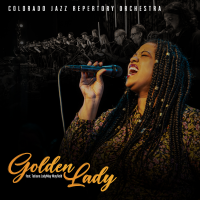Home » Jazz Musicians » Jerome Richardson
Jerome Richardson
Jerome Richardson's ability to double on a number of instruments in the reed/woodwind family kept him in steady employment for half a century. A first-call reed player in New York and Hollywood, Richardson's work on saxophones and flute have enhanced literally thousands of recording sessions. Always a very valuable musician to have on a session, he excelled on tenor, alto, flute, baritone, and soprano, as if each one were his main instrument. He tended to be underrated or passed over because he was a studio musician who was often mostly in the ensembles, but Richardson was a fine soloist too. Jerome started on alto saxophone at the age of eight. In his teens Benny Carter, Johnny Hodges and Willie Smith were his ideals. He became a professional at the age of fourteen, and had a brief stint then with Lionel Hampton, and worked with Bay Area bands until 1941, during which time he also studied music at San Francisco State College. The flute was added to his working equipment in 1940. Both this and his alto sax were used to advantage in a Navy band, under the direction of Marshall Royal, at St. Mary's Pre-Flight from 1942 to 1945. He joined the Lionel Hampton band again in 1949, with whom he recorded what is widely regarded as the first modern jazz solo played on flute on ‘Kingfish’, and was also a member of the Earl Hines big band. Richardson settled in New York in 1954, where he began a very active session career, but continued to make his mark in a purely jazz context. He worked with bands led by Lucky Millinder and Cootie Williams, and led his own quartet at the famous Minton’s Playhouse in Harlem in 1955. Richardson was heard at the Cafe Bohemia in the summer of 1955 with Oscar Pettiford's group. Starting in October of that year, Jerome fronted his own quartet at Minton's with a very fine rhythm section of Hank Jones, Wendell Marshall and Shadow Wilson. In December he started working in the pit orchestra at the Roxy and doubled between the club and that theater. The job at Minton's ended on January 1, 1956 but Jerome stayed on at the Roxy until February of 1958. He worked regularly with band leader and arranger Quincy Jones, including a European tour with Harold Arlen’s blues opera Free and Easy in 1959, and was also involved in many of Jones’s more pop-oriented projects.
Read moreTags
Eddie "Lockjaw" Davis with Shirley Scott: Cookin’ with Jaws and the Queen: The Legendary Prestige Cookbook Albums

by Mark Corroto
There is something undeniably hip about the four discs which make up Cookin' With Jaws And The Queen, the music by tenor saxophonist Eddie “Lockjaw" Davis and Hammond B3 organist Shirley Scott. Recorded in three sessions between June and December 1958, at Rudy Van Gelder's studio, which happened to be in his parents' home, the music deftly recreates the soul-jazz experience heard in nightclubs and maybe more significantly on jukeboxes. Davis made a name for himself in the ...
Continue ReadingEddie "Lockjaw" Davis and Shirley Scott: Cookin’ with Jaws and the Queen: The Legendary Prestige Cookbook Albums

by Jim Trageser
In a sign that the art of the box set continues to evolve, and that history never runs in a straight line, a lavishly produced box set of tenor giant Eddie “Lockjaw" Davis and organist Shirley Scott is being released not only on CD but on high grade vinyl LPs and downloads as well. Compare that to Bing Crosby's 1954 set, which came out on seventeen 45s in an actual box with a locking clasp and key.
Continue ReadingJAZZ LEGEND JEROME RICHARDSON SUCCUMBS TO HEART FAILURE

Source:
All About Jazz
by Russ Dantzler
June 24, New York, NY -- Jerome Richardson, 79, suffered heart failure and passed away at 6:45 a.m. Friday at Englewood Hospital in New Jersey. He is survived by his wife Rowena, daughters Denise Wilson and Kim Richardson, and grandchildren Spring and Sean.
Per his wishes, a memorial service at Saint Peter's Church in Manhattan is being planned in lieu of a funeral. At the family's request, donations may be made in his name to the Dizzy ...
read more






























